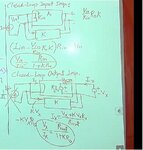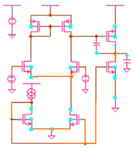yefj
Advanced Member level 4
Hello I Have designed a Voltage amplifier ,i Have a high impedance on the input and low impedance on the out put.
amplifier plot and its Gain responce shown bellow.
if the schematics bellow there is a transimpednce amplifier design.
How make our built amplifer to sense current?(as shown in the plt bellow?
Thanks



amplifier plot and its Gain responce shown bellow.
if the schematics bellow there is a transimpednce amplifier design.
How make our built amplifer to sense current?(as shown in the plt bellow?
Thanks







